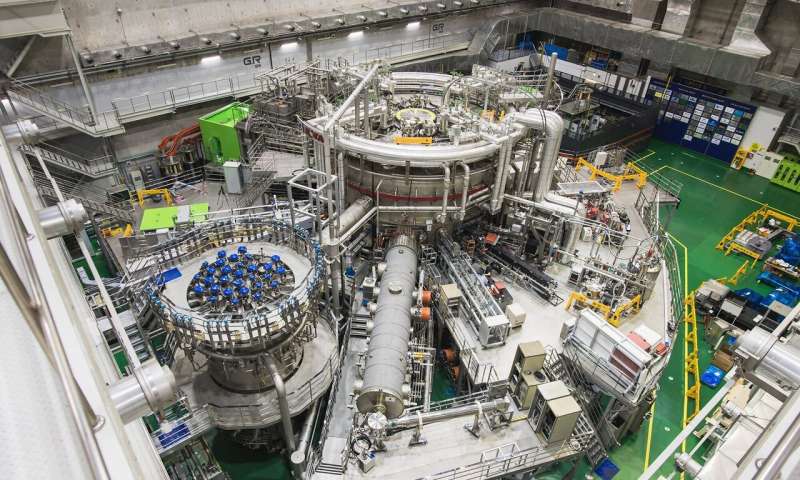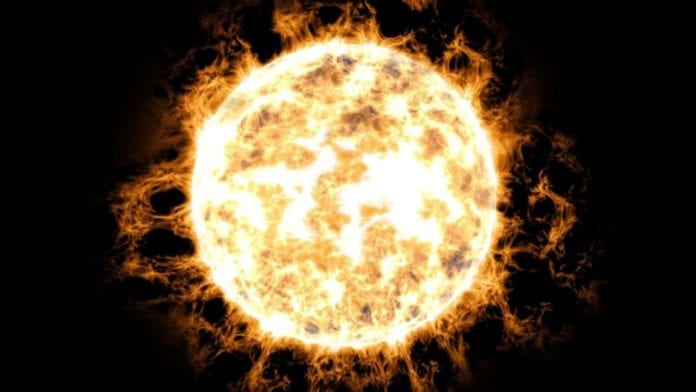The Korea Superconducting Tokamak Advanced Research (or KSTAR) is a superconducting fusion device, also known as the Korean Artificial Sun. As the name suggests, the device set a world record as it successfully maintained the high temperature plasma for 20 seconds, with a temperature of over 100 million degrees Celsius.
On 24th November 2020, the KSTAR Research Center at the Korea Institute of Fusion Energy (KFE) announced their success. The research was conducted jointly with the Seoul National University (SNU) and Columbia University of the United States.
In 2018, for the first time, the artificial sun reached a temperature of 100 million degrees, but could only retain it for 1.5 seconds. The next year, in 2019, the plasma operation time was 8 seconds. It is an achievement to extend this by more than two times in the 2020 operation.

How the artificial sun works
Efforts were made to recreate the fusion reactions that take place on the sun, on Earth. For this, Hydrogen isotopes must be placed inside a fusion device like KSTAR. This creates a plasma state, in which ions and electrons are separated. Ions must be heated and maintained at high temperatures.
Even though there have been other fusion devices which have briefly managed plasma at a high temperature of 100 million degrees or higher, none of them could hold the temperature for more than 10 seconds.
In 2020, KSTAR (or the artificial sun) improved the efficiency of the Internal Transport Barrier (ITB) mode. Developed last year, it is one of the next generation plasma operation modes. Thus, the artificial sun was successful in maintaining the plasma state for a long period of time by overcoming the limits of the ultra-high-temperature plasma operation.
Director Si-Woo Yoon of the KSTAR Research Center at the KFE said, “The technologies required for long operations of 100 million- plasma are the key to the realization of fusion energy, and the KSTAR’s success in maintaining the high-temperature plasma for 20 seconds will be an important turning point in the race for securing the technologies for the long high-performance plasma operation, a critical component of a commercial nuclear fusion reactor in the future.”
Yong-Su Na, professor at the Department of Nuclear Engineering, SNU, who has been jointly conducting the research on the KSTAR plasma operation, added, “The success of the KSTAR experiment in the long, high-temperature operation by overcoming some drawbacks of the ITB modes brings us a step closer to the development of technologies for the realization of nuclear fusion energy.”
Dr Young-Seok Park of Columbia University who contributed to the creation of the high-temperature plasma said, “We are honoured to be involved in such an important achievement made in KSTAR. The 100 million-degree ion temperature achieved by enabling efficient core plasma heating for such a long duration demonstrated the unique capability of the superconducting KSTAR device, and will be acknowledged as a compelling basis for high performance, steady-state fusion plasmas.”
Looking Further
The KSTAR research centre also conducts experiments on a variety of topics. One of them is ITER research, which is designed to solve complicated problems in fusion research.
The KSTAR will share the success of its research of the artificial sun operation and other experiments this year in the IAEA Fusion Energy Conference which will be held in May. The ultimate goal for the artificial sun is to maintain a temperature higher than 100 million degrees for three hundred seconds by 2025.
KFE President Suk Jae Yoo said, “I am so glad to announce the new launch of the KFE as an independent research organization of Korea. The KFE will continue its tradition of under-taking challenging researches to achieve the goal of mankind: the realization of nuclear fusion energy.”
Further Reading:


